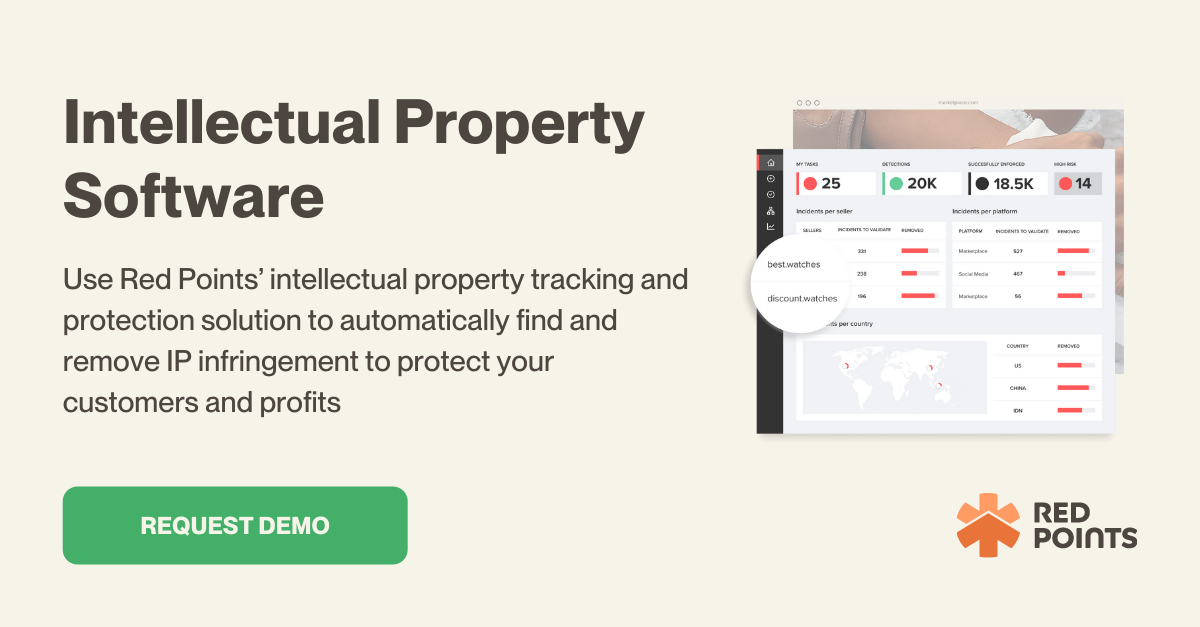
Table of Contents:
Last updated on: June 8, 2022
Business identity theft is when someone attempts to capitalize on an idea or niche that you’ve worked on for months or years to commit fraud.
Copycats rarely succeed in the long term, but they can chip away at your profits in the short term.
This article explains how to protect your business from copycats and identify them.
Intellectual property refers to property resulting from thought, i.e., intellectual effort. It is possible to buy, sell, or license intellectual property. It can also be safeguarded against business identity theft or infringement by third parties.
In recent years, the supply of counterfeit goods has switched from the lower-profit secondary market – where buyers are aware that they are acquiring counterfeit goods and want a considerably lower price – to the main market, where consumers are willing to pay higher prices since counterfeiters duped them into believing they were purchasing genuine items.
Consumers can be duped by counterfeiters thanks to advancements in the appearance of counterfeit items. Some counterfeit goods look so much like the originals that they can’t be told apart by the naked eye.
Counterfeiters are increasingly discovering ways to exploit supply chain weaknesses or develop alternate supply chains to get around supply chain integrity rules.
To make matters worse, as the Internet’s widespread use spreads around the world, counterfeiters now have greater access to potential buyers, making it easier to mislead them about what they’re buying and changing the routes by which illegally produced goods reach consumers.
The Internet has particularly affected the pharmaceutical, auto parts, and electronics industries.
Consumers are being deceived into purchasing pirated items by offenders who construct fake websites that look authentic. Consumers’ ability to make reasonable decisions is complicated by the anonymity of the Internet and counterfeiters’ ability to mask the genuine nature of the things they provide online.
Although there are various reasons why actors violate intellectual property rights and commit business identity theft, profit remains the primary motive for all sorts of players involved.
While you have little influence over business copycats, there are steps you can take to safeguard your online business:
Consider copyright protection if you want to protect any original work of authorship, such as a literary work, performing art, visual art, photograph, motion picture, or digital content. Unpublished and published works are both protected by copyright.
The Library of Congress can register your work for you if you pay the right fees and send in a copy of your work, or you can have your lawyer do it for you and send in the relevant paperwork on your own. You may show ownership of your work if someone steals it by registering a copyright.
For a business to be remembered by its customers, it must have a distinctive selling point to protect itself from trademark theft. Typically, small business owners develop a clever logo or catchy business name that succinctly explains their products and services.
Protecting your trademark will ensure that no other company may use your words, symbols, logos, or brand name until you give them your permission and approval.
Remember that just because your company is a corporation or a limited liability company doesn’t imply your name or image is protected unless you acquire a trademark registration from the United States Patent and Trademark Office (USPTO).
To protect an invention, entrepreneurs may want to file for a patent. A patent is a legal document that establishes exclusive ownership of an invention, new products, and procedures.
If you hold this certificate, you can restrict anyone from using or producing them without your permission.
This kind of IP protection is given by the government, which creates the concept of a property owner. It usually lasts for 20 years and should be renewed regularly.
Entrepreneurs may find it more difficult to handle the patent registration process on their own. Patents are issued by the US Patent and Trademark Office and primarily cover mechanical, manufacturing, chemical, or biological inventions or designs.
There are a few further steps you may take to ensure the safety of your small business once you’ve been established legally. For small business owners, this is a very attractive option because it is less expensive than obtaining a trademark registration.
Numerous options exist, and we suggest using as many of the following as you can:
Copycats aren’t a problem for the most successful brands. Taking a step back, focusing on your own brand, and enhancing your product might be beneficial.
Your logo is only one part of your brand’s identity. It’s about your beliefs, how you want to be perceived by customers, and what sets you apart from your competitors.
There are a few things to ask yourself in order to figure out your unique selling point (USP).
Once you’ve worked it out, it’s a solid foundation on which to build or base your marketing plan.
In many cases, businesses spend more time worrying about their competitors’ products or services than they do about serving their own customers. Focus on your current clientele first and foremost.
By delivering high-quality items and excellent customer service, you can establish brand loyalty and strengthen your business. When you have a strong relationship with your customers, they are less likely to leave when a copycat competition emerges.
If you keep up the good work, improve the standard, and encourage new ideas, you’ll succeed. Finally, continue to create trust with your users, customers, or clients by soliciting their opinions and suggestions. Give them the attention and support they deserve.
Confidentiality agreements, such as Non-Disclosure Agreements, should be used wherever possible when discussing potential trade secrets or valuable intellectual property. Any intellectual property disclosed or made available for use should be the subject of these agreements, which should spell out who owns what and how it can be used.
Begin by having your new workers or freelancers sign a Non-Disclosure Agreement (NDA). Existing or former employees are discouraged from disclosing trade secrets to competitors due to this.
Think about forming a joint venture with a major player in the industry you’re entering. In addition to raising your brand’s visibility, the agreement will prevent any imitators from forming partnerships with these partners.
You can also benefit from strategic collaborations if you fear that a major corporation will steal your idea. A larger corporation can gain from your startup without stealing from you through a partnership or private label.
You should go the extra mile and keep yourself aware of any identity theft of your business. Use the tools offered by Amazon and Alibaba. One such example is the Amazon brand registry system.
The Amazon Brand Registry is a service for online retailers who sell their goods through Amazon. By registering their brand with Amazon, merchants can gain access to a variety of sophisticated tools for safeguarding their brand’s intellectual property and establishing a trustworthy online presence for their customers.
To detect the defects of counterfeit goods, buy one and then openly disclose the differences between your product and the infringers on the Internet.
Yes. If someone breaches your registered intellectual property rights or your registered company identity on an online platform, you can have them removed by filing a report with the platform.
In an age where counterfeiters may use the internet to their fullest potential, only modern brand protection technology can protect your business from identity theft.
Think about using technology like Red Points. Using Red Points, you’ll have access to unmatched data scanning, risk assessment, and data clustering.
Its deep learning algorithms, a database of the 5,000 most popular marketplaces, and contacts with retailers help Red Points to fight counterfeits.
Red Points Brand Protection Software uses a bot-powered search to scour the internet for any suspected infringements and takes them down automatically. Take control of your brand’s existence with new enforcement tools and professional support for anti-counterfeiting, grey trade, impersonation, and infringement.
You can check out the how-to guides on Red Points to learn more.
Online businesses in crowded markets need to identify their most valuable assets and devise strategies to guard against threats.
Copyright registration is an excellent preventive step, but it does not provide complete security. Copyright infringements should be taken down immediately. Technology-based solutions capable of scanning massive amounts of data over the web are ideal for this task.
If you’re worried about others profiting from your ideas, Red Points’ copyright protection software can help. Digital works such as software and video games are all covered by the software, as well as movies, printed materials, streaming, and educational resources.
Red Points is pioneering Revenue Recovery, a new addition to the revenue tech stack that tracks down your phantom competitors, including copycats and counterfeiters, and takes them down.
The Revenue Recovery technology stack takes a step back and analyses what is causing the revenue to be drained before it even reaches the funnel. Customers will have a better, more authentic experience, and less physical labor will be needed. This will raise revenue for the brand and improve brand equity.
Check out how Red Points can safeguard your business and eliminate trademark and copyright infringement for you.
